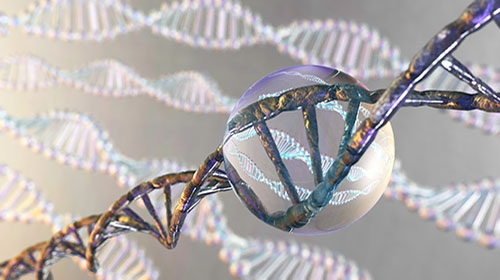Registered Diagnostic Cardiac Sonographer (RDCS): An Overview

What are Radionuclide Drug Conjugates (RDCs)?
Coupling drugs combine precise targeting and potent killing properties, has become a widely recognized form of medication in recent years. Radioactive drug conjugates (RDCs), as a particular form of coupling drugs, are formed by combining radioactive isotopes with disease-targeting molecules. According to the application of RDCs, they can be divided into two main categories: diagnostic RDCs and therapeutic RDCs.
γ-emitting isotopes are selected for diagnosis because the radiation they produce can be detected by specific instruments such as positron emission tomography (PET) or single-photon emission computed tomography (SPECT), assisting clinicians in accurately identifying lesions. For example, isotopes such as Tc-99m, I-123, F-18, and Ga-68 are all used for diagnostic RDCs.
In contrast, isotopes coupled with targeting molecules that emit short-range particles (such as α or β particles) can be used for disease treatment. The principle is that these particles have high linear energy transfer (LET), meaning they can transfer their energy to target tissues or cells in a short period, causing significant cell damage. Therefore, therapeutic RDCs can be used to kill cancer cells or alleviate pain in cancer bone metastasis treatment. Typical therapeutic isotopes include I-131, Lu-177, Y-90, and Ra-223.
We can offer a range of stable labeled isotope services and products.
The Structure of Radionuclide Drug Conjugates (RDCs)
Similar to ADCs and SMDCs, RDCs are primarily composed of components that facilitate targeted localization, including antibodies or small molecules (ligands) for targeting, linkers, chelators, and radiographic/imaging factors (radioisotopes). The most significant difference between RDCs and other conjugate drugs is the drug payload. In RDCs, the payload is no longer a toxic molecule but a radioactive isotope. Using different radioisotopes can serve different imaging or therapeutic functions, and some isotopes even possess both capabilities. Since radioactive isotopes do not need to interact directly with cells, the linker in RDCs does not need to be cleaved during the drug’s efficacy, further enhancing the stability and safety of RDC drugs in vivo.
Targeting Ligand
The targeting ligand plays a crucial role in precise localization, guiding the radioactive isotope to the target. RDC drugs can be classified into Radionuclide Antibody Conjugates (RAC) and small molecule-based (like peptides) radionuclide conjugates, depending on the type of ligand. Currently, RDC drugs have made significant breakthroughs in cancer treatment alongside the development of antibody drugs and ADCs. Antibodies are relatively effective for hematologic malignancies. For solid tumors, using small-sized antibodies (such as single-domain antibodies or scFv) and peptide-conjugated radiopharmaceuticals has become a prominent direction in research and development due to their small size and excellent tissue penetration capabilities.
Linker & Chelator
In RDC drugs, the payload is no longer a small molecule but a radioactive isotope, so the choice of linker differs from that of ADC and SMDC drugs. Although the linker in RDC drugs consists of two parts, linking the antibody and the radioisotope, it is essentially a group that connects the ligand and the radioactive isotope, which can be considered as a whole. In the means of linking the chelator to the ligand via the linker, conventional reactive functional groups are often used for covalent bonding. N-Hydroxysuccinimide ester (NHS), thiocyanate (SCN), and acid anhydrides are the most commonly used reactive electrophilic groups in this strategy, which can react with the ε-amino group of lysine residues on the ligand under basic conditions (pH 7.2-9). Under these conditions, chelators containing NHS or SCN can easily form strong covalent bonds with the ligand. After chelator attachment, radioactive labeling is carried out through a chelation process.
However, using NHS or SCN for chemical conjugation reactions may result in a lack of site-specificity and dose control, similar to random conjugation and imprecise DAR in ADCs. Spontaneous chelator-antibody (peptide) binding may reduce the affinity for the target receptor and make it difficult to achieve optimal pharmacokinetic properties. Therefore, there is an urgent need to develop more ideal chemical selection methods to link chelators to ligands. Typically, chelating radioactive elements to ligands requires the use of chelators. Non-metallic isotopes such as I-131 and I-123 can be covalently linked to ligands. In contrast, metallic isotopes require chelators such as DOTA and DTPA, which are representative macrocycles and acidic molecules, for conjugation.
- Questions and Answers
- Opinion
- Motivational and Inspiring Story
- Technology
- Live and Let live
- Focus
- Geopolitics
- Military-Arms/Equipment
- Segurança
- Economy/Economic
- Beasts of Nations
- Machine Tools-The “Mother Industry”
- Art
- Causes
- Crafts
- Dance
- Drinks
- Film/Movie
- Fitness
- Food
- Jogos
- Gardening
- Health
- Início
- Literature
- Music
- Networking
- Outro
- Party
- Religion
- Shopping
- Sports
- Theater
- Health and Wellness
- News
- Culture

